Okay, so cooking pasta isn’t the hardest thing in the world to do. I know.
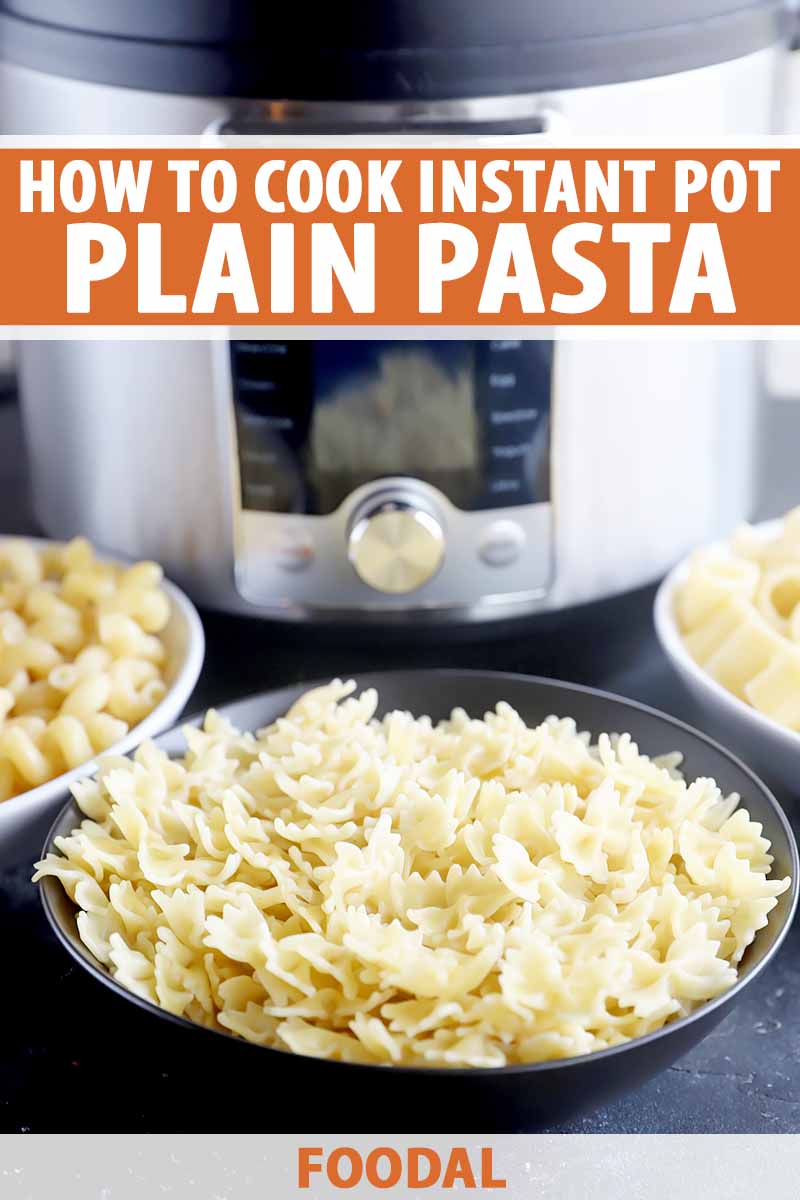
It might seem silly to bust out your electric pressure cooker for this task. But really, wouldn’t it be nice to be able to avoid hovering over the stove, waiting for water to boil, and stirring so it doesn’t stick?
Wouldn’t it be wonderful to not have to worry about accidentally overcooking or undercooking it ever again?
When it comes to preparing plain macaroni in the electric pressure cooker, the easiest shape to work with is something that’s shorter, like penne, elbows, or small shells.
These tend to be simpler to prepare because you don’t have to worry about breaking longer noodles into smaller pieces so they fit in the insert, and they cook more evenly as well.
That’s not to say it’s impossible to make longer or larger shapes in your Instant Pot, and we’ll cover some of these in other how-to guides, like spaghetti and rice noodles. You’ll find all kinds of pasta tutorials in our pillar article, How to Cook Pasta in the Pressure Cooker.
But you’ll find bite-sized options in my pressure cooker at home more often than not, especially penne, my current favorite to use in pasta salads and casseroles.
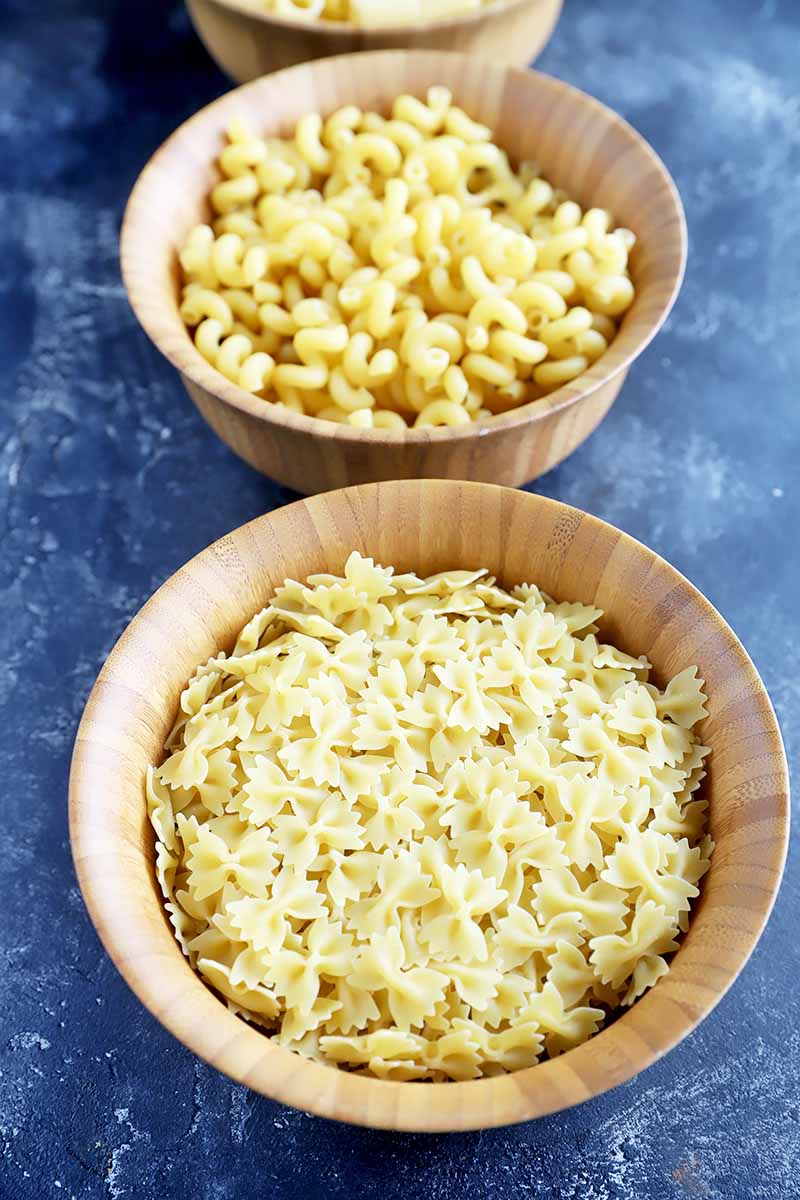
There are a couple of reasons to turn to this appliance for cooking your favorite starchy sides.
First of all, this is truly a one-pot dish. There’s no straining involved, and no colander to wash, since the liquid is absorbed as it cooks.
And just as important, you can simply add your ingredients, set the timer, and walk away.
Go read a book for a few minutes. Pour yourself a glass of wine. Put your feet up. There’s no need to worry about the pot boiling over!
Now, let’s talk about the magic formula to cook this one-pot wonder.
Okay, maybe it’s not really magic, but it does involve some simple math.

You start by taking the total cook time listed on the packaging. If there’s a recommended range, select the lowest number.
Now, divide that total number in half. Subtract two minutes, and set the time to come to pressure and cook for that amount of time. I’ve included examples in the cooking instructions below, if you need a reference.
There’s just one important thing to remember: Always allow the pressure to release naturally for 5 minutes before quick-releasing the remaining pressure manually.
I swear, the noodles come out perfectly every single time. It really is like magic.
Here’s everything we’ll cover up ahead:
What You’ll Learn
Can I Use Chicken or Vegetable Stock Instead of Water?
For added flavor, I love to use chicken or vegetable stock in lieu of water when I use this method.
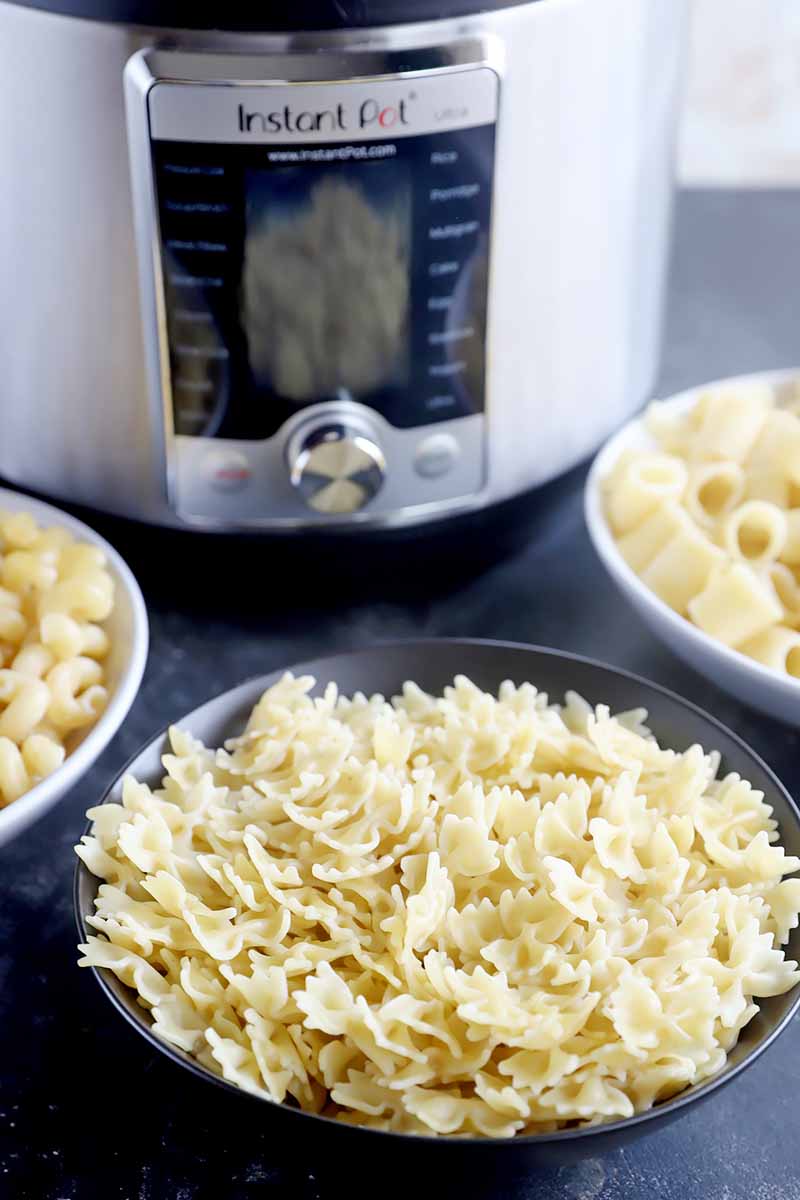
It adds extra flavor to the noodles, which I think is really nice when you are using them in another recipe, or adding a light sauce.
The only recommendation I have here is to use a low-sodium option if you buy it from the store, or homemade stock. Otherwise, omit the salt in the ingredients list below. That way, your broth-enriched rotini or bowties won’t come out too salty when they’re done.
How to Cook Plain Pasta in the Electric Pressure Cooker
Once you learn the simple formula for cooking plain pasta in your favorite appliance, you may never go back to the stovetop method again. You’ve been warned…
Step 1 – Measure Ingredients and Determine Cook Time
To start, gather and measure your ingredients. You will need:
- 8 ounces short pasta (penne, farfalle, cavatappi, etc.)
- 2 cups water (or low-sodium vegetable or chicken stock)
- 1/2 teaspoon salt (omit if using salted stock)
To determine the cook time for your selected variety, check the cooking instructions on the packaging.
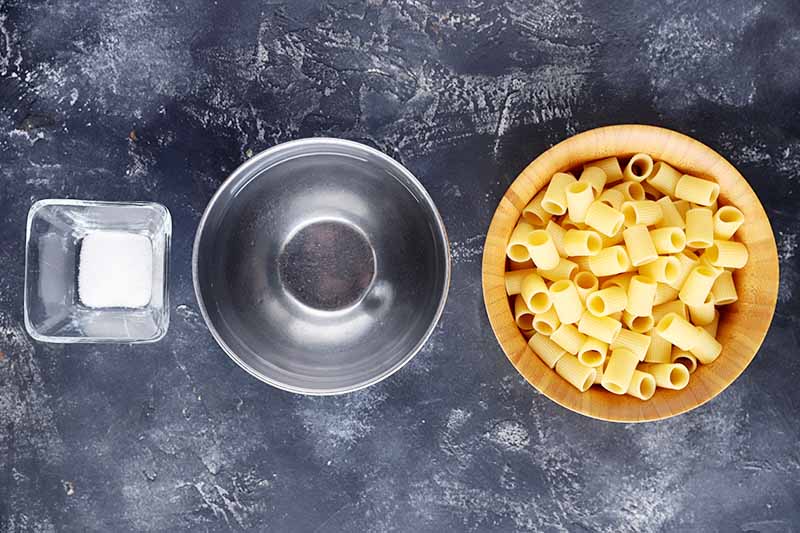
Take the total number of minutes, or the lesser number if a range is suggested. Divide that in half, and subtract two minutes. If you need to divide an odd number in half, round up to the nearest number. The final result is your total that you should use when setting the timer.
For example, an 8-minute cook time on the packaging would translate to a 2-minute cook time in the pressure cooker. And a range of 9 to 11 minutes on the box equals 3 on the timer.
Step 2 – Pressure Cook
Add the pasta, water, and salt to the pressure cooker insert.
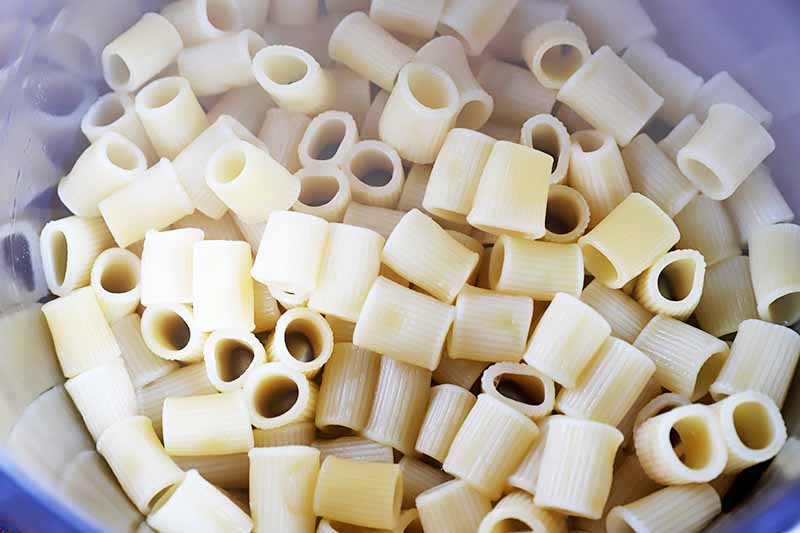
Cover and set to Manual. Cook on High pressure for the amount of time you calculated in the previous step.
Let the pressure release naturally for 5 minutes before manually releasing any remaining pressure.
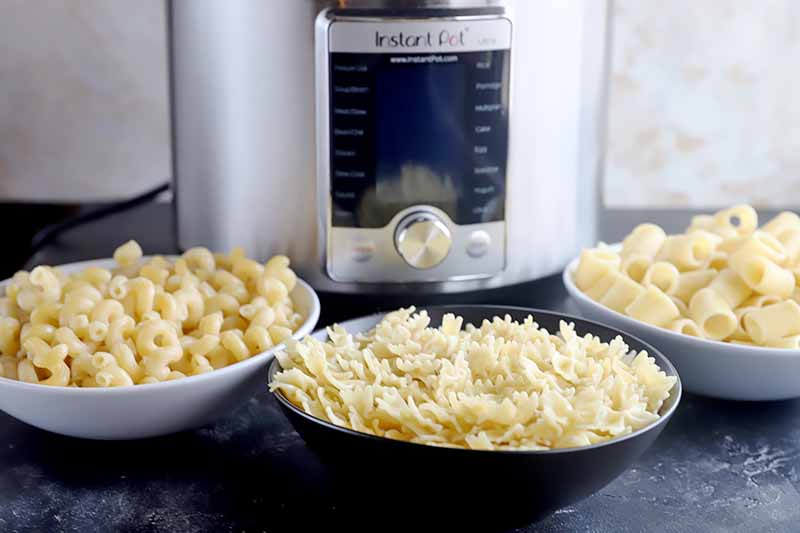
Open the lid, and stir well to incorporate any remaining liquid – there should be very little left.
Serve as desired, or cool and use for meal prep or other recipes.
It’s Cooked – Now What?
Before I let you go, let’s have a little chat about the various ways you can use these cooked plain carbs.
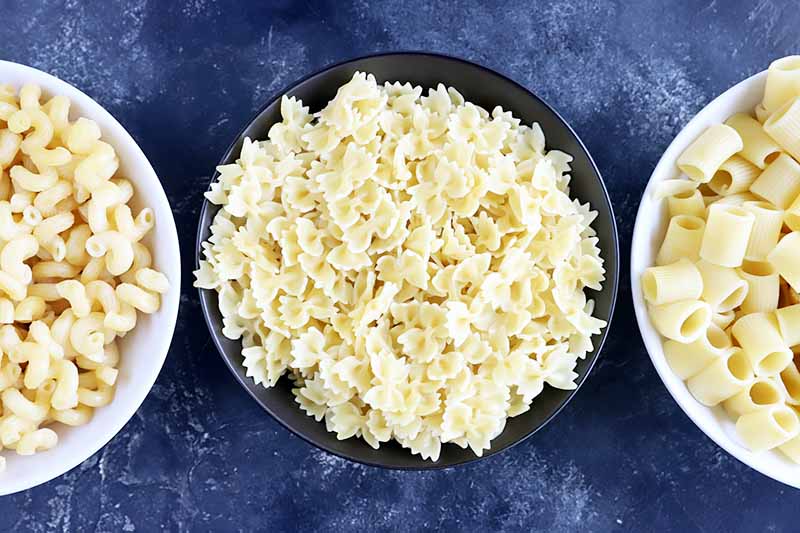
To start, you can obviously serve it up with your favorite sauce. I just add some warmed sauce right into the insert once it’s done, then stir it up and serve it right away.
Use a homemade marinara, Bolognese, or your choice of sauce, or grab a bottle of your favorite from the store – no judgment here, we all need no-stress nights!
You’ll notice that the finished product comes out with a lovely coating of starchy water already on it when you give everything a stir right after cooking. This acts as a thickener for any sauce you want to make from scratch, just like if you were using a few splashes of reserved water to help a sauce to coat a batch of noodles that you prepared in a pot of boiling water.
You can even use this method to make a simple macaroni and cheese. All you have to do is add the shredded cheese, butter, and milk at the end of cooking, and stir until the cheese is melted and all of the ingredients are combined well right in the insert, coating the noodles.
Another option is to completely chill it to use it in your favorite pasta salad recipe. Let it cool completely on the counter in the insert and put a lid on top for fridge storage if you have one, or transfer it to another container for refrigerator storage.
A couple of my personal favorites are this recipe for fresh tomato pasta salad, and this spinach and sun-dried tomato version.
Finally, think about using it in a tasty casserole like this cheesy charred broccoli casserole bake or baked penne with sausage, zucchini, and feta. Even a simple classic like baked ziti is a fantastic option.
What’s your favorite type of sauce to serve with pasta, and which shape will you make? Tell us in the comments below.
Wondering what else you can make in the electric pressure cooker? Check out these how-to’s next:
- How to Cook a Whole Chicken in the Electric Pressure Cooker
- How to Cook Basmati Rice in the Electric Pressure Cooker
- How to Cook Beef Stew in the Electric Pressure Cooker
Photos by Meghan Yager, © Ask the Experts, LLC. ALL RIGHTS RESERVED. See our TOS for more details.
About Meghan Yager
Meghan Yager is a food addict turned food and travel writer with a love for creating uncomplicated, gourmet recipes and devouring anything the world serves up. As the author of the food and travel blog Cake 'n Knife, Meghan focuses on unique foodie experiences from around the world to right at home in your own kitchen.

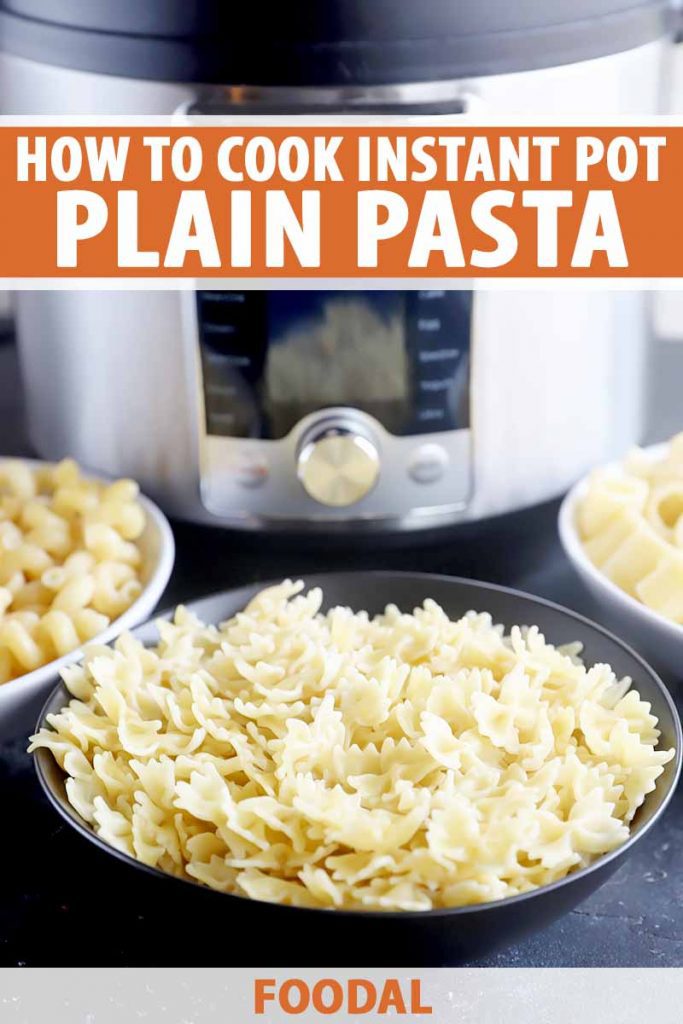

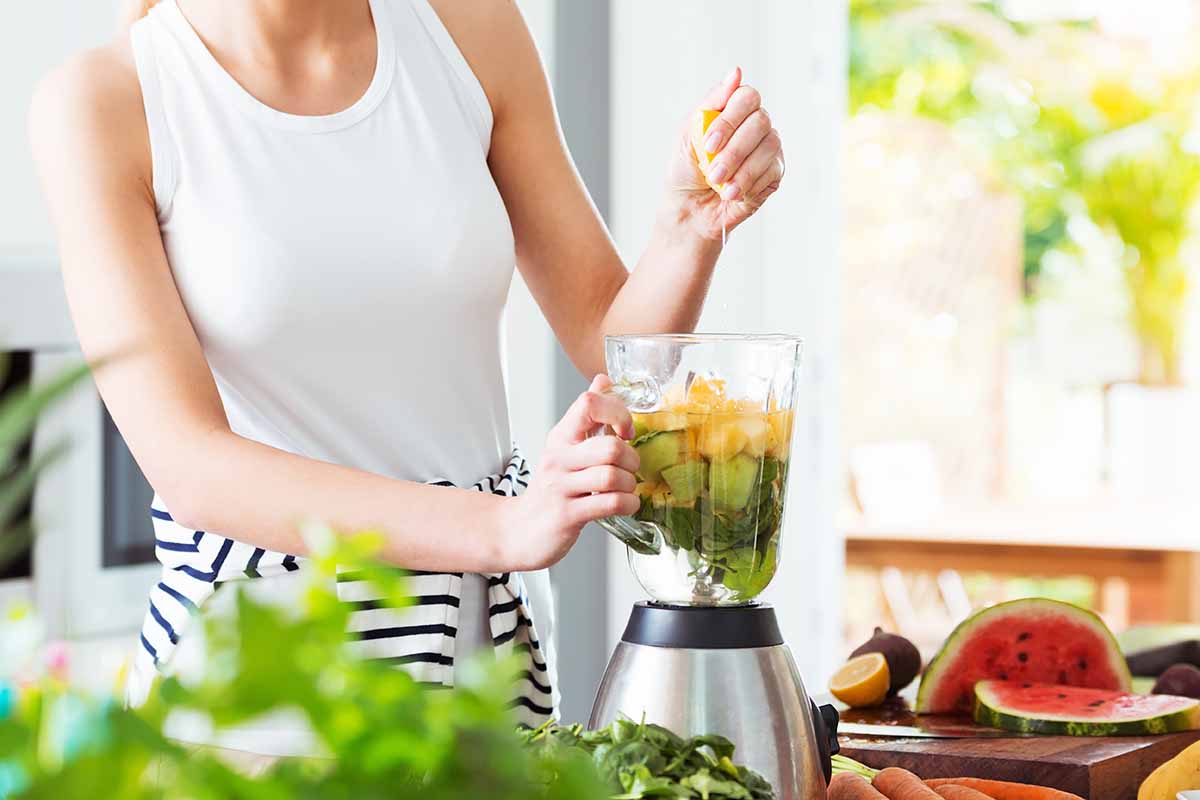

PERFECT EVERY TIME! She is not kidding! I have a full blown casserole on the table in 20 minutes or less. I put the liquid in, pasta, cooked meat, veggies, sauce (like c of m soup) on top, but not stirred into the pasta. Set the machine for time, let it cook, then sit for 5 minutes, then open it and layer topping on (cheese, breadcrumbs, chips, etc) airfriy for 5 minutes… DONE!
I have made italian rigatoni, tuna noodle, spaghetti, linguine,
maranara sauces, wine sauces, name it, any veggie, frozen or fresh, oh my word!! The options are endless. Hubs geta a GREAT casserole. I have my time to do my thing. LIFE IS SO GOOD!!! Thank you for doing the trying and testing and timing for us. YAY!